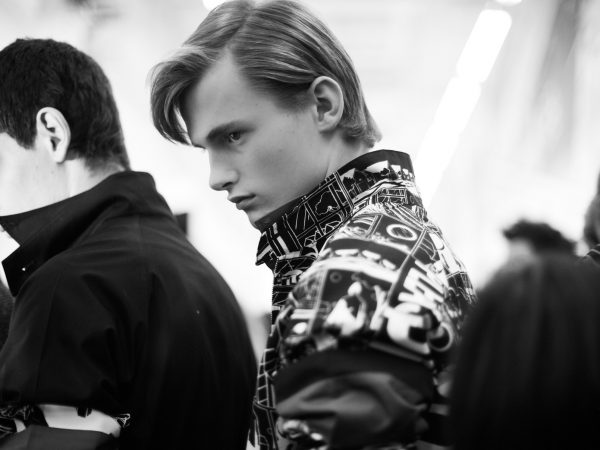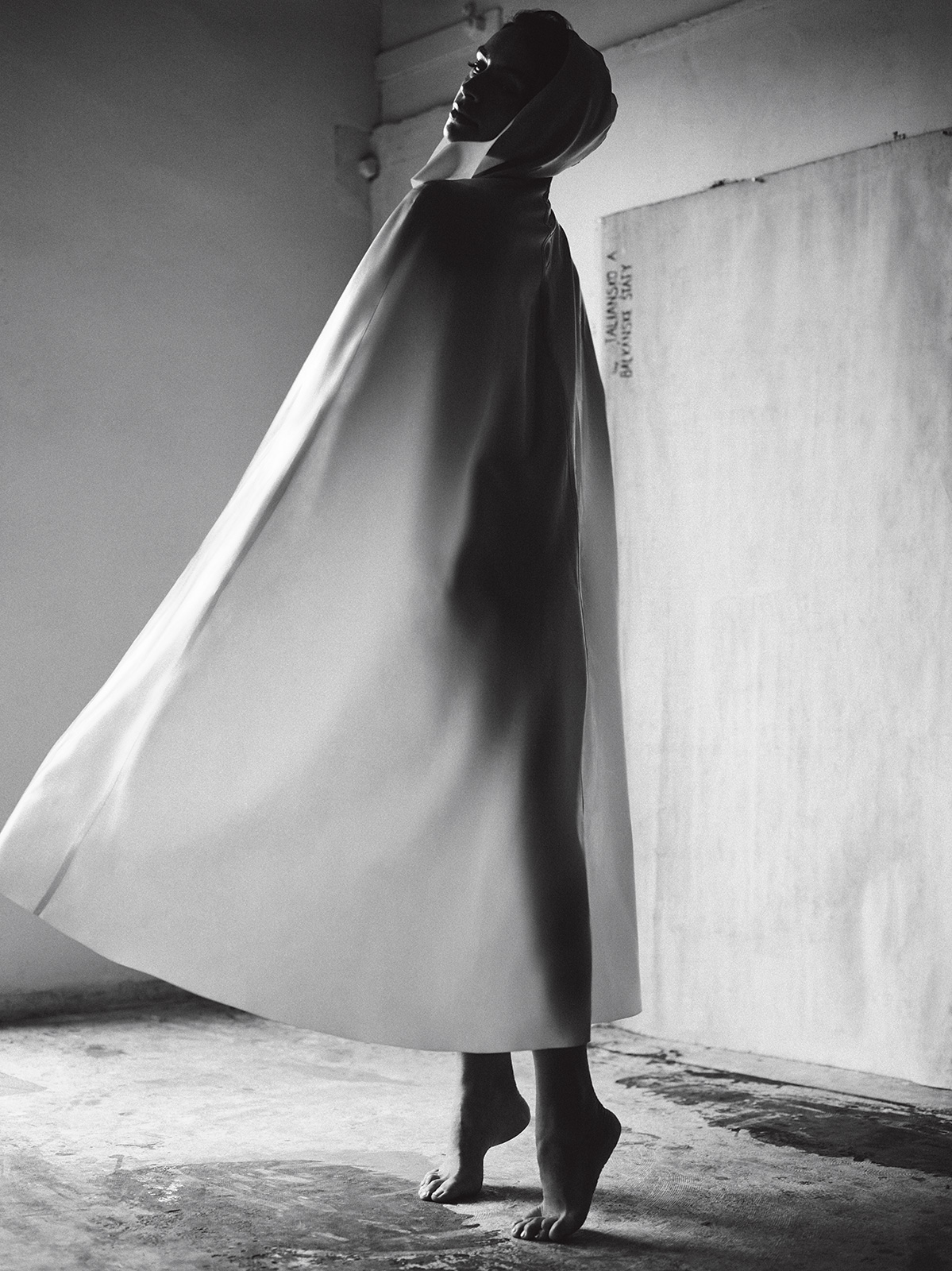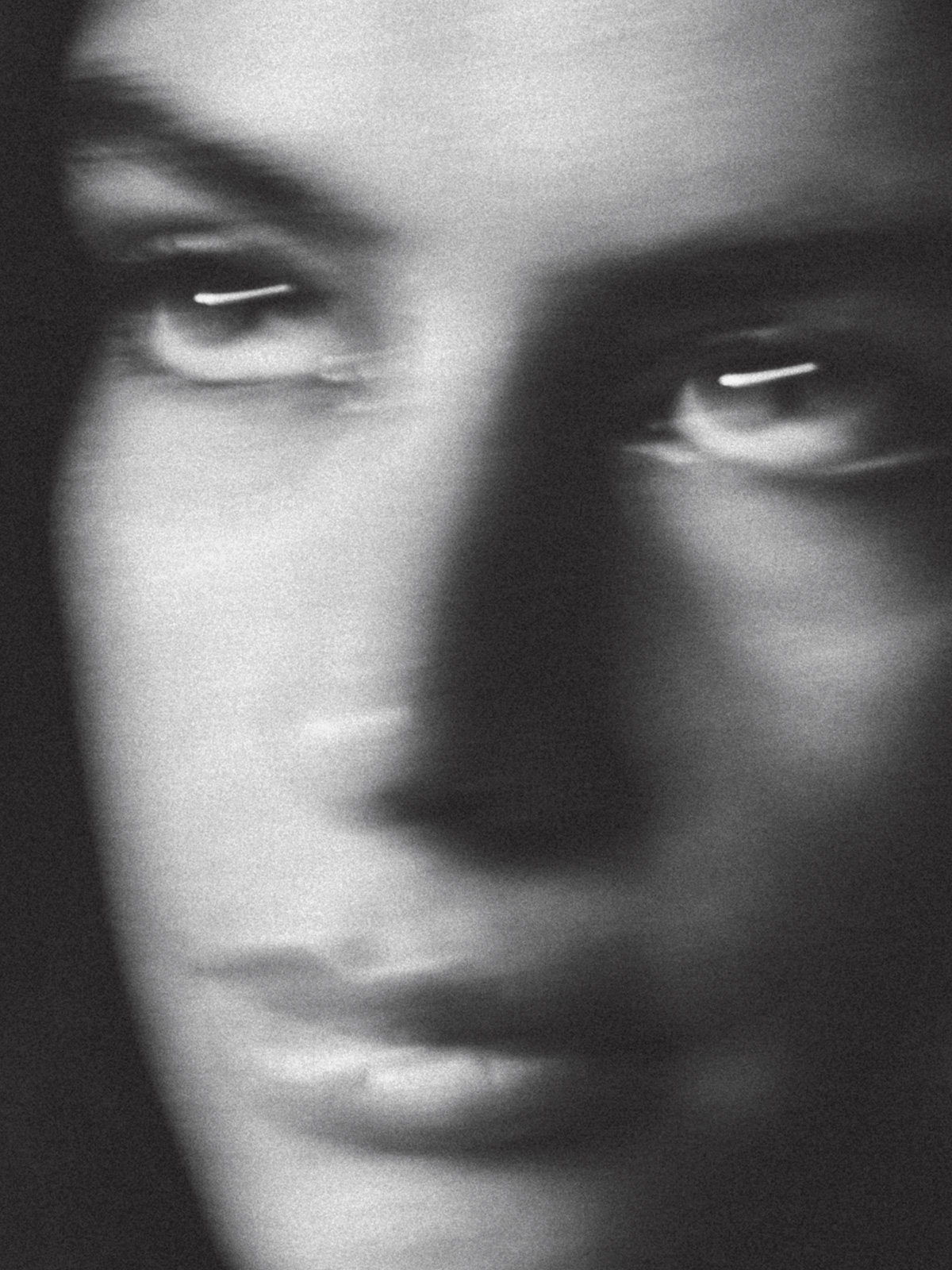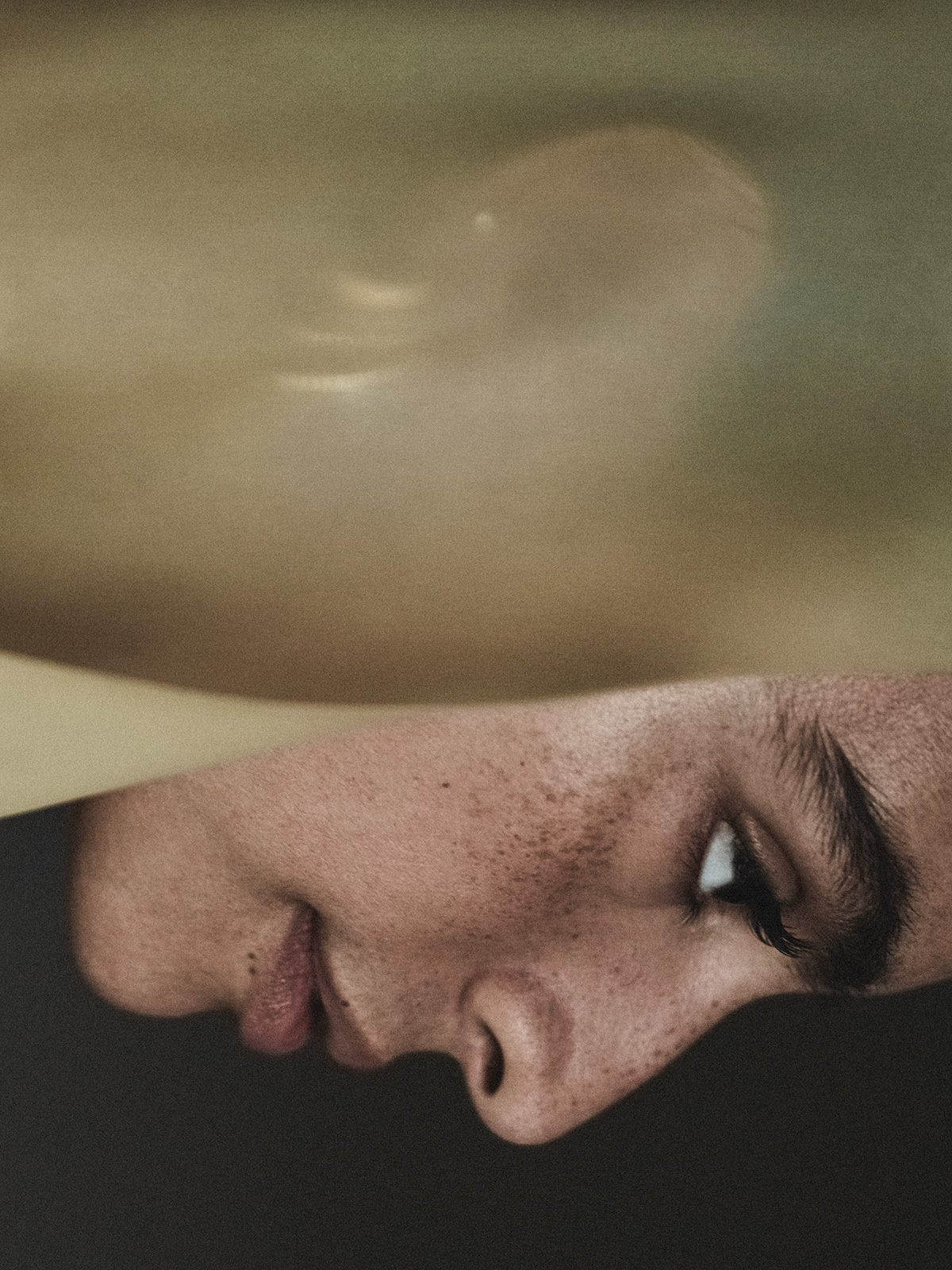
Both foreigners in the Netherlands, Musician Sevdaliza and curator Beatrix Ruf connect about migration and the role of identity in art.
“There’s a woman, she’s every fantasy, and no reality in one,” sings Sevda Alizadeh, better known as Sevdaliza, in “Amandine Insensible.” The song is about one of the musician’s alter egos, a woman named Amandine, who is so lost in her fantasies that she doesn’t care about anything else around her. Just as she takes on several characters (Amandine, Marilyn Monroe, and Zilla—a woman experiencing loss—are a few in her professional realm), Sevdaliza’s personal background too is fragmented. Born in Tehran, the singer—whose ethnic background is Persian, Russian, and Azerbaijani—left Iran with her family to move to Rotterdam at a young age. She went on to play for the Dutch national basketball team in her teens before pursuing a master’s degree in communications. It wasn’t until after university that Sevdaliza honed her sound: a fusion of haunting vocals mixed in with sultry synths and pulsating beats. Through her melancholic lyrics, she investigates identity and transformation.
Like Sevdaliza, Beatrix Ruf landed in the Netherlands as a foreigner. The German curator moved to Amsterdam from Zurich to become the director of the Stedelijk Museum in 2014, the city’s main institution for modern and contemporary art. Her dedication to art and sense for aesthetics have qualified her as one of the most admired museum heads in the world. In 2006, she curated the Tate Triennial, along with a survey of the German artist Isa Genzken, and her collaborators span from the established, like Swiss artist Ugo Rondinone, to the emerging, such as South African artist Zanele Muholi, who opened an exhibition at the Stedelijk in summer of 2017. In their home country this summer, Sevdaliza and Ruf conversed over their common creative ground, discussing the role of identity in art, racism, and migration.
Above The Fold

Introducing: Molly Goddard, 2017 LVMH Prize Finalist

New Artifacts

Ephemeral Relief: Backstage Milan Fashion Week Men’s Spring/Summer 2018

LVMH’s Final Eight
Ann Binlot—Sevdaliza, what was it like coming to the Netherlands from Tehran?
Beatrix Ruf—You had to flee?
Sevdaliza—Yes. I don’t really know how it was because I was very small.
Beatrix—How was it for your parents? Living in the Netherlands during the first few years, you probably watched [their] emotions.
Sevdaliza—For anyone, going somewhere new takes a few years to adjust. It’s a transformative experience to find your way. Fleeing mostly comes with traumas that need to heal. They did it gracefully. I was very lucky to have been raised here, in the Netherlands. I’ve found a creative freedom where I can do what I want.
Ann—Growing up, what was the creative climate like?
Sevdaliza—My space is the internet, so I’m not bound to an actual physical one. Although the fact that everything in the Netherlands is so well arranged is actually very freeing. If you want to be an artist, you can make it work financially, even if you have to have a part-time job or apply for funds.
Beatrix—I think it’s because everything here is related to inspiration. The development of ideas, experimentation, and seeking out new areas is really embraced, and that’s very particular. I find it quite impressive how people here bring their children very early on to museums and all of these other cultural areas.
Sevdaliza—You also see it in our education.
Beatrix—Many countries in Europe have experienced that shock of the public hand pulling back from supporting arts. But you can also see that as something quite energizing, because it’s about the ownership of the individuals to say, “This is actually the culture that we want.”
Ann—You’ve both touched on protest in art in your practice. Can you explain what it means to you?
Sevdaliza—Art reflects the times in different ways through the eyes of the artist—it’s history in different forms. It doesn’t just mobilize change, it can even predict the future or show parallels of possibilities. That’s what protest in this form means for me.
Beatrix—Art is not activism in the terms that we know it. Art is inherently political just by the fact that it disrupts our patterns. When [the political] turns into an image, it is able to destabilize conventions and preconceived ideas and make you think. This includes music, too. Really good art never pins you down and says, “this is it,” or “do that, don’t do that.” It is really about making you rethink. Maybe you even have to find new words for things, new emotions for things. That can be destabilizing. I find it to be very political to claim that as a place of freedom in society. Therefore, I find the institutions that allow real art to happen—this can be the music industry, this can be a museum or art space—are public spaces that actually guarantee freedom.
Sevdaliza—It’s also quite nice when it grabs you off guard or makes you feel uncomfortable. When it makes you feel things you didn’t know you could feel. That’s definitely protest, but not in a way that’s been put in your face.
Beatrix—Recently at Stedelijk there [was] a show by Zanele Muholi. What I find so impressive about her work is that she very clearly comes from a place of activism. The L.G.B.T.Q.I. scene in Africa is so problematic—people are being killed and such horrible things are happening. She brought that to the museum space as well, but translated it as an insistence of beauty. She’s allowing you to see beauty in the difficult conditions that her images were made in.
Ann—In Zanele’s work, the artist takes on many different identities. Sevdaliza, you have an alter ego, Amandine, in addition to other characters. What do you make of identity and ego?
Beatrix—Who is Amandine?
Sevdaliza—There are a lot of identities within my work and in myself. It’s a playful way to deal with dualities—to embrace them and not be pinned down to a static being. We are always changing and evolving, and we can become something different. For me, creating music is very close to acting. I am embodying something, but it’s actually coming out of me. It can be quite difficult for your mental health, because your behavior is influenced so heavily. You will behave in certain ways, and sometimes afterward you won’t believe that was you. It’s very problematic for my personal life, but in my work it’s a tool that I use a lot. I can really dive into it heavily.
Beatrix—In your videos particularly, you use a lot of imagery that plays with a merge of totally different cultural identities.
Sevdaliza—Yes. That reflects me well, because my cultural heritage is Farsi, Iranian, Persian. But my ancestors come from White Russia and also Azerbaijan. I grew up in the Netherlands, but I also have a great affinity with South America, especially Brazil. I never meant to incorporate all these elements; they’ve just grown like this.
Beatrix—What have been your influences?
Sevdaliza—Musically? I was such a typical teenager. I had my emo phase, my rap phase; I had my folk phase, my punk phase. All my phases were dark. My music is definitely influenced by melancholy in every aspect. I’ve never listened to uplifting music. It never attracted me.
Beatrix—You said that your place is the internet. What I also see in your visual translations of your music is that you use elements that a lot of young artists also deal with in terms of how you define the actual reality of the body. Why is a body a body, and how do you interconnect the machine? What is physicality versus imagination? You can transform not only identities, but you can also transform physical realities continuously.
Sevdaliza—That stems from my background in sports: There’s a border that you have to get over, and I’m always trying to find maneuvers. When I reach it, I realize that it’s not my limit. I’m always trying to evolve into something that I actually cannot be.
Beatrix—Online, you can continuously ask questions and go on to your next place because it’s all connected. For me, that is a theme very similar to working with a museum. Besides it being a place where you can really fight for freedom, it is also one where you should be allowed to ask questions. When it’s really interesting, art continuously reformulates itself to the now and to the changes that we experience in the contemporary. I find that extremely interesting, and I do think that the internet has changed radically the way that we approach those questions.
Sevdaliza—This is what I find so interesting about discovering music that is from 30 years ago and placing it in a current environment. The context is still so accurate. I think about all the visionaries we know, but I’m always dreaming about the visionaries we will never know.
Ann—Sibahle Nkumbi, a friend of Zanele who is a black South African woman, was recently pushed down the stairs by the white husband of her Airbnb host in Amsterdam after checking out late. Do you think there needs to be a larger conversation about racism in the Netherlands?
Beatrix—That was absolutely wrong. And that it was a man that was the aggressor; that it happened to a black woman. Even if you don’t consider yourself racist, it’s important to understand that you are not free of preconceived images, ideas, or projections. Guilt plays an important role as well. There is so much that we have to learn, and I don’t know how we can actually learn, because dialogues are frozen. I consider myself someone without prejudice, but I’m not free of it. I catch myself having strange thoughts sometimes, and I wonder how I could even think of these things.
“It is difficult for people to accept fluidity in human beings. They want to categorize you and pin you down and tell you what you are.”
Sevdaliza—We are not born racist. We lack good education. That’s where it starts and where it ends. No child is born a racist, so it’s very simple. Beatrix, you are definitely right: When you are raised in this world you catch yourself having stereotypes and all these thoughts. It’s not our nature to be racist, but it is to be stupid in some ways.
Beatrix—Helpless also.
Sevdaliza—Yes. It’s such a difficult and large subject. Every time I speak about it I always think, “What am I actually adding to the conversation?” I’d rather make something meaningful. I never made a target audience to focus on, but I get so many messages from young women, young men, young trans, L.G.B.T.Q.I.—every person, identity, whatever—asking about my fluidity: how I present my body and my work and how I play with different gender identities. A lot of these people tell me that they are surprised that I haven’t chosen a stereotype. I’m not saying that people who represent a stereotype aren’t that—I think they are—but I feel myself [to be] more fluid. There were periods in my life where I was discriminated against because I had more masculine features. When I used to train, I’d be using heavy weights and I became very muscled. What did people tell me? “You look like a man.” Now I’m in a period of my life where I like to wear feminine clothing, and I like to be soft and dance and do yoga. It is difficult for people to accept fluidity in human beings. They want to categorize you and pin you down and tell you what you are.
Beatrix—Racism is very specific, in a way. “Because you are that, I hate you.” Or, “I don’t want you to be here.”
Sevdaliza—Even being all of myself—and not just the part that people accept of me—I get a lot of difficulty. But I also see that a lot of people have supported me. They will say, “Oh, I’ve never seen somebody like you, but I’m also like you!” It is very difficult to be a whole person, because it’s not accepted to be this or that and it’s scary.
Beatrix—It’s definitely not easy to present the same image. Things are changing and maybe in the next five hours I will be someone who you didn’t expect to be in front of you.
Sevdaliza—My answer to racism is just to be myself and to see the reactions. It can actually be nice for other people to realize that there are others just like them who are changing all the time.
Beatrix—Fifty percent of the people living in the Netherlands have a migration background. Europe is full of migrants; we just forget about that. The world is full of migrants. I do find it a challenge to live that on a daily basis, and to overcome the perception of the museum as being only about that one part of society. You mentioned before that you never targeted an audience, and that is one of the biggest challenges ever, because that is affirmative racism almost: to target.
Sevdaliza—But as an institution you have such a big responsibility, not only to yourself, but also to everyone that you are trying to reflect. So, in order to understand that, you either have to be it, or you have to study it. For the most part, you have to be it. And that’s difficult.
Beatrix—The great artist Ulises Carrión, who lived in the Netherlands for a long time as well, said he was born a foreigner.
Sevdaliza—Yes.
Beatrix—We’re all born foreigners, and we’re doing a show about that theme. It’s an overwhelming situation, but we have to remind ourselves that this is part of our history; people move for many different reasons, and it’s our responsibility to respect all reasons.
Sevdaliza—People fear the unknown and they want to stay in their little safe bubble, which I understand. Borders are man-made, so it’s quite weird that we—as one human being to another—actually have the privilege to say that you can’t come here. There has to be some system organizing everything. There’s no specific solution; there are only utopic situations. I just try to understand and accept that I am privileged to live here, and I try to do something good with the fact that I know where I come from and how it feels to be fleeing from one country to another.

















